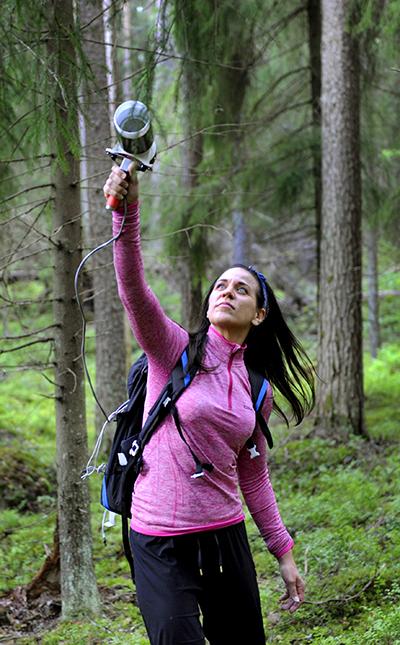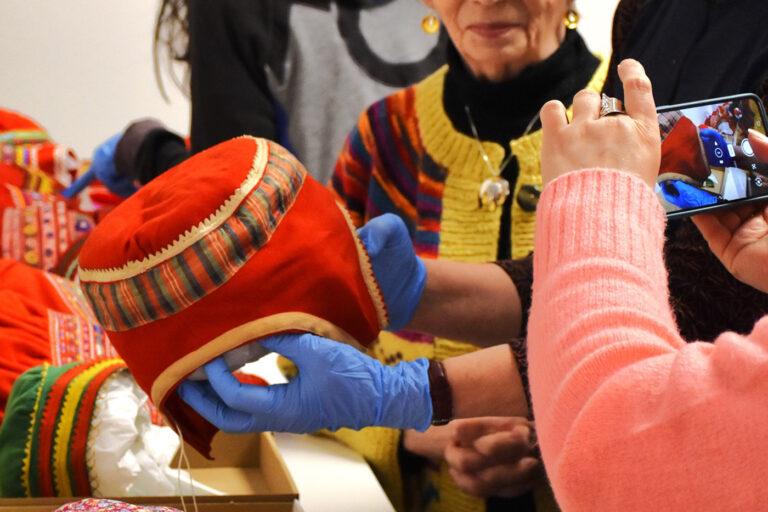A “summer cold” can be a mosquito-borne viral disease
Essi Korhonen is studying mosquitoes and the viruses they spread in summery Finland and sweltering Kenya. She received grants for her postdoc research from the Kymenlaakso Regional Fund in 2017 and 2018.


Text: Antti Kivimäki
Photos: Johannes Wiehn
What feels like an ordinary “summer cold” can actually be a viral disease spread by mosquitoes. In Finland, mosquitoes transmit the Inkoo and Chatanga viruses and, particularly in eastern and central Finland, Sindbis.
– Usually the symptoms caused by these viruses are akin to those of a brief summer fever. Under normal circumstances, few people will consult a doctor over a short bout of fever in the summer, so there are likely more unknown than known cases, explains Essi Korhonen, postdoctoral researcher in virology from the University of Helsinki.
Recently, a few dozen cases of Sindbis virus, i.e. Pogosta disease, have been recorded in Finland annually, with the exception of 2002, when there were 600 recorded cases.
Pogosta disease causes a rash that disappears quickly, but unlucky patients can suffer from years of recurring joint inflammations. The Inkoo and Chatanga viruses can occasionally also cause neurological symptoms.
It is worth staying on top of mosquitoes and the diseases they spread, because in warm countries mosquito-borne diseases such as malaria, Zika virus and dengue fever are a major problem.
– With the warming of the climate, new mosquito species could spread into Finland that transmit new diseases. Additionally, Finns can already bring back viruses from their travels which could even be transmitted by our local mosquitoes, Korhonen explains.
Korhonen also received funding from the Cultural Foundation to take part in a University of Helsinki team surveying mosquito species. Their paper, published this year, reported that Finland is host to 43 species of mosquito, which is two species more than were found in a similar survey in the 1970s.
– That in itself does not mean that the species were new. They might just not have been observed earlier.
The mosquitoes were also found to carry many new viruses. These are not transmitted to humans and have therefore not been studied much before.
– The mosquitoes’ own viruses may, however, influence their tendency to carry viruses that are harmful to humans. They could sensitize a mosquito to human viruses or, conversely, prevent their ability to carry human viruses. This could be significant in terms of the spreading of these viruses to Finland.
Korhonen analyses urine and blood samples obtained from patients, as well as mosquito samples. She uses a bucket to scoop up mosquito larvae from pools of standing water, and an insect vacuum – a devide that looks a bit like a hair dryer – to capture adult females.
She has also been involved in a joint insect team of the Universities of Helsinki and Nairobi for the last five years. Patient blood samples and mosquitoes have been collected from the slums of Nairobi, from a research station of the University of Helsinki in Kenya’s Taita Hills, and from the shore in the Mombasa region.
At the same time the researchers make observations of the environment in order to model how it affects the spreading of mosquito-borne diseases. In the Taita Hills they found a highly urban strain of dengue virus, which was of Indian origin.
These work trips are far from leisure. The researchers might spend their days with an insect vacuum on all fours on the floor of the public latrine of a tiny village, roaming through dense, foggy forests or climbing over piles of tyres at garages.
Mosquitoes are often collected in people’s homes and on market sites.
– When we return to base at seven thirty, we still have to sort through them all and freeze them, otherwise there is no point in collecting them. The work will often go on until the early morning hours, and by sunrise we have to start getting ready for a new collecting expedition.
At the same time, the Finnish researchers are helping the Kenyan scientists to create research infrastructure of their own, as well as advising ordinary people.
– If we find an abnormal amount of mosquitoes in a village, for example, we will encourage people to cover any pools of standing water. All in all, our reception in Kenya has been very warm and welcoming.
This summer, Korhonen has been studying rabbit fever (tularemia) in Ostrobothnia. For some reason, mosquitoes transmit Francisella tularensis bacteria in Finland and Sweden, while elsewhere tularemia is not mosquito-borne.
Meanwhile, the Stadin Hyttyset (Mosquitoes of Helsinki) project is surveying the mosquito species and mosquito-borne viruses of the Helsinki Metropolitan Area.
– By Finnish standards, it is a densely populated area, and it also has the most entry points into the country.
How afraid should Finns be of viruses transmitted by mosquitoes?
– Not particularly afraid. I wouldn’t give up having forest walks because of it, Korhonen says.



